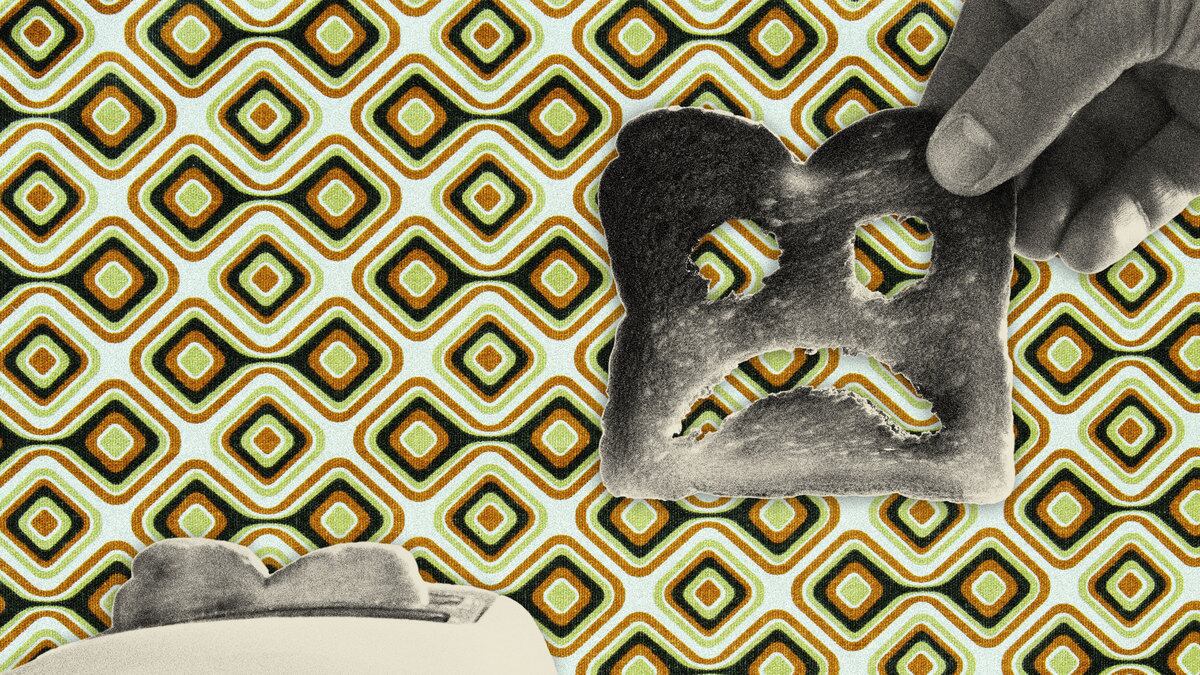Apart from technology, it is hard to think of any aspect of daily life which has changed so radically in one generation as the way we eat. For a child growing up in the London suburbs in the 1970s with parents who were open to the new culinary influences from the continent and beyond but in a cash-strapped, unconfident, British way, food was both a comfort and a terror.
Twice a day we convened around the oak, gate-leg table in the living room, my siblings and I in a state of anticipation or fear, depending on what was on the menu. Breakfast was safe and predictable. Until I was well into my teens, my mother would get up every morning in time to make bacon, egg, and fried bread, all cooked in lard, for the whole family. I did the math once and worked out that by the time I was 16 I had ingested slightly more than my body weight in animal fat—just from breakfasts alone.
It’s hard now to equate the lavishness of those daily fry-ups with the thrift that governed other meals. The only joint of lamb we ever saw was breast, the flat, fatty piece, which was rolled up and tied with string and cooked until it was crisp and a tenth of its original size. When I lived in New Zealand in the 1990s, I discovered that this cut, known unappetizingly as “lamb flaps,” was not even sold to humans but was fed to dogs. The other midweek staple—designed to eke out an insufficient allowance of mince—was stuffed marrow. A hefty three-inch slice of this watery travesty of a vegetable was filled with rice and traces of mince and onion, its disappointing contents hidden by a layer of breadcrumbs and grilled cheese.
My mother didn’t have a sweet tooth, never ate chocolate because it gave her migraines, and hated baking, so puddings were always something of an afterthought. A sachet of butterscotch flavored starch called “Angel Delight,” whisked with milk, was a regular offering, while on special occasions there might be “mousse.” This was a poor and very distant British relation of the delicious French dessert, made by dissolving a packet of jelly in hot water and then whisking in a can of evaporated milk until it went frothy. Once set in the fridge, the top layer formed a pleasantly bubbly “mousse;” the disappointing bottom layer was a rubbery blancmange.
My parents were innovators too. Among my schoolfriends I was the only one who ate homemade curry. I’m not saying I liked it, or that it would have been recognizable as curry to anyone from India, but it tasted of something other than salt and pepper, which made it exciting. We ate it with a topping of chopped banana, peanuts, desiccated coconut, and diced tomato, which was supposed to “take the heat out,” while also hinting at flavors from overseas.
My father’s ingenuity was sorely tested during a threatened coffee shortage in the 1970s. He was very keen on his daily cup of coffee, which he made by stirring a spoonful of Nescafe into boiling milk. Until I was quite an age, I didn’t realize that coffee came in any other format, and I was dismayed at the watery brew that went by the same name at other establishments. To beat the shortages, he tried creating a coffee substitute by baking carrots in the bottom of the oven on a low heat until they turned withered and brown and then grinding them into granules. They certainly looked authentic, but the resulting drink was—unsurprisingly—foul and the experiment was abandoned.
Food lasted forever in those days. A chip-pan of vegetable oil lived, uncovered, on the back of our stove for my whole childhood. Occasionally mum would scoop out the frizzled and blackened scraps of potato with a tea strainer, but I don’t recall the contents being thrown out and replaced. Perhaps it followed the same calendar as changing the oil in the car—once a year. There was a small drum of grated parmesan, with the consistency of dandruff, which lived in our larder for at least a decade. Ketchup also never saw the inside of the fridge but sat for years in a cupboard whose contents were gently warmed by fumes from the chip pan.
When I came to write my novel Small Pleasures, set in the London suburbs in the 1950s, a decade of post-war austerity which had begun with rationing still in force, I knew that food was going to play an important role in signposting character, class and era. The limited life and modest expectations of the main character, Jean, are poignantly revealed in her colorless, flavorless meals of reheated cauliflower cheese, tinned pears, rice pudding, “eggs anyhow.”
Food is used as both a gift and a bribe—an abundance of runner beans from the garden is shared with an elderly neighbor in exchange for a favor; a “strawberry tea” is used as an inducement to persuade Jean’s reclusive mother to take up an invitation to leave the house. An episode of apple-picking carries an erotic charge, as does the sharing of some precious, still rare tangerines. A bar of chocolate, parceled out to last a week, is one of the “small pleasures” that provides consolation in the face of dreary duty. Olives—redolent of the Mediterranean, cocktails, glamour—appeal to Jean in theory but taste like the smell of gym shoes and are swiftly rejected.
As part of my research, I tricked my palate back into the 1950s by trying out some of the recipes from women’s magazines of the period. These were full of wonders. Olive oil—now a staple of every cook’s larder—was only available from the chemist as a treatment for earwax. Cornflour seemed to be a miracle ingredient that was included in everything. If it’s thin, thicken it! If it’s thick, make it thicker!
A recipe from the 1952 News of the World Household Guide and Almanac for “Chinese Egg Chow Mein” sufficient for eight servings, used the following ingredients: celery, onion, cabbage, a can of baked beans, hard boiled eggs, chopped tongue, and a sauce made from cornflower, water, gravy browning, and, for flavor, “three teaspoons of soy sauce (available from the chemist).” Reader, I did not make this meal. Baked beans? Gravy browning? Three teaspoons of soy sauce between eight people?
At every book festival or signing that I have attended since the publication of Small Pleasures, older readers have not failed to comment on the memories it evoked of the terrible meals of their childhood. We have bonded over our children’s disbelief in a world without pesto, falafel, burritos, oat milk lattes, and 24-hour takeaway. Although many people have expressed nostalgia for certain characteristics of 1950s life—quiet streets, lack of traffic, neighborliness, thrift—not one has ever made the claim that the food was better in “the good old days.”
Clare Chambers is the author of SMALL PLEASURES, published by William Morrow.






